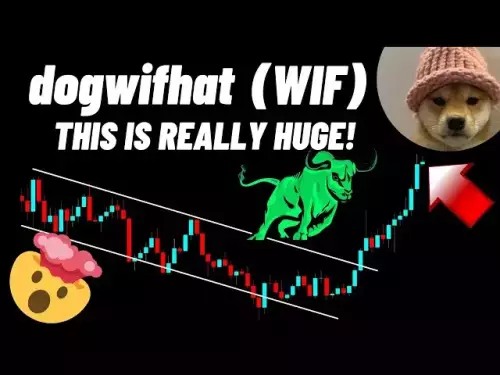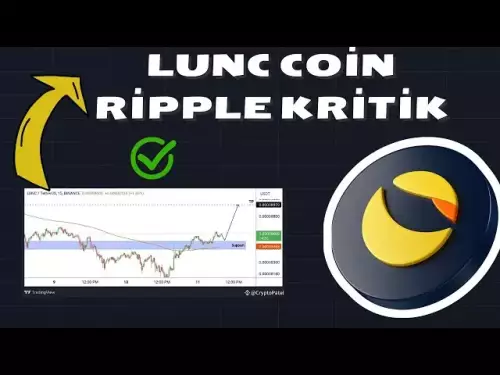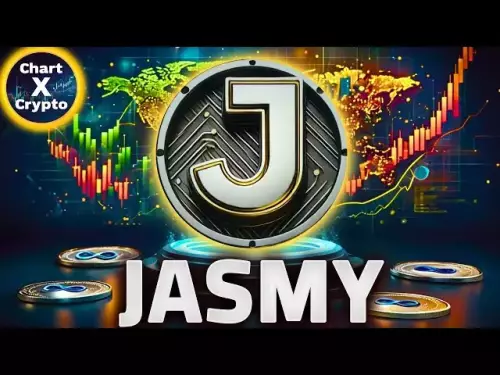-
 Bitcoin
Bitcoin $113100
1.31% -
 Ethereum
Ethereum $4577
-1.19% -
 XRP
XRP $3.011
-0.46% -
 Tether USDt
Tether USDt $1.000
0.00% -
 BNB
BNB $867.6
0.27% -
 Solana
Solana $212.2
3.64% -
 USDC
USDC $0.9999
0.01% -
 Dogecoin
Dogecoin $0.2239
0.63% -
 TRON
TRON $0.3482
-0.91% -
 Cardano
Cardano $0.8689
-0.61% -
 Chainlink
Chainlink $24.26
-1.18% -
 Hyperliquid
Hyperliquid $48.41
-4.72% -
 Sui
Sui $3.502
0.03% -
 Ethena USDe
Ethena USDe $1.001
-0.01% -
 Stellar
Stellar $0.3844
-2.01% -
 Cronos
Cronos $0.3486
60.97% -
 Bitcoin Cash
Bitcoin Cash $559.4
0.06% -
 Avalanche
Avalanche $24.79
1.10% -
 Hedera
Hedera $0.2407
-0.91% -
 UNUS SED LEO
UNUS SED LEO $9.555
0.24% -
 Litecoin
Litecoin $114.0
-1.05% -
 Toncoin
Toncoin $3.162
-0.94% -
 Shiba Inu
Shiba Inu $0.00001265
0.31% -
 Uniswap
Uniswap $10.06
-0.10% -
 Polkadot
Polkadot $3.904
-0.33% -
 Dai
Dai $0.9999
0.00% -
 Bitget Token
Bitget Token $4.657
-0.50% -
 Monero
Monero $274.1
-1.01% -
 Aave
Aave $326.8
-1.43% -
 Pepe
Pepe $0.00001019
-0.82%
How effective is the neckline breakthrough of the W-bottom pattern at the daily level?
The W-bottom pattern signals a potential bullish reversal in crypto trading, confirmed by a neckline breakout with strong volume.
Jun 27, 2025 at 03:21 pm
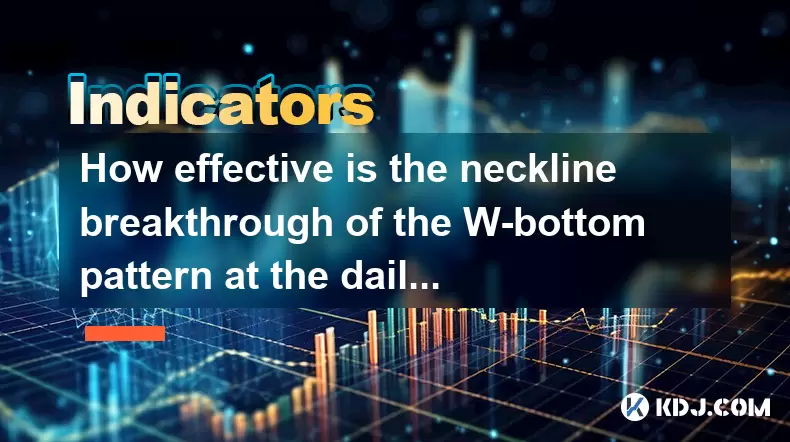
Understanding the W-Bottom Pattern in Cryptocurrency Trading
The W-bottom pattern is a well-known technical analysis formation used by traders to identify potential trend reversals from a downtrend to an uptrend. In cryptocurrency markets, where volatility is high and price action can be unpredictable, understanding the effectiveness of this pattern becomes crucial for decision-making. The pattern resembles the letter 'W' on the chart, formed by two distinct lows at approximately the same price level with a moderate peak in between.
Traders pay particular attention to the neckline breakthrough, which occurs when the price moves above the resistance level connecting the highs of the pattern. This breakout is considered a signal that bullish momentum may be gaining control.
Identifying the Neckline in Daily Chart Analysis
In daily-level trading, the neckline serves as a critical reference point for confirming the validity of the W-bottom pattern. It is drawn horizontally across the highest point between the two dips of the W-shape or sloping slightly if the second peak is higher than the first. Accurate identification of the neckline is essential because it sets the stage for a potential trade entry.
To draw the neckline correctly:
- Locate the two distinct lows that form the bottom parts of the W.
- Identify the swing high separating these two lows.
- Connect the high points before and after the dip to establish the neckline.
The effectiveness of the pattern increases when the price breaks through this line with significant volume, suggesting stronger buying pressure. Traders often wait for a close above the neckline rather than a simple intraday touch to avoid false signals.
Evaluating the Effectiveness of the Breakthrough Signal
The effectiveness of the neckline breakthrough depends on several factors including market conditions, volume confirmation, and time frame consistency. In the crypto space, where news events and macroeconomic shifts can dramatically impact prices, not every W-bottom leads to a sustained upward move.
Historical data suggests that when the breakthrough occurs with increased trading volume, the likelihood of a successful continuation of the uptrend improves significantly. Conversely, if the breakout happens on low volume, it may indicate weak conviction among buyers and result in a failed breakout.
Additionally, the depth and duration of the W-bottom influence its reliability. A deeper pattern with a longer consolidation period tends to produce more robust breakouts compared to shallow, quick formations. Time spent consolidating near support levels also contributes to the strength of the subsequent move.
Entry Strategies After a Confirmed Neckline Breakout
Once the neckline breakthrough is confirmed, traders look for optimal entry points to initiate long positions. There are generally two approaches to entering a trade after a breakout:
Immediate entry upon breakout: Some traders prefer to enter as soon as the price closes above the neckline. This method aims to capture the full extent of the potential rally but carries the risk of entering during a false breakout.
Pullback entry strategy: Others wait for a retest of the broken neckline as new support. This provides a second chance to enter at a better price with reduced risk, assuming the pullback holds and the trend resumes.
Both strategies require strict stop-loss placement to manage risk. Typically, a stop-loss is placed just below the second low of the W-bottom to protect against a reversal.
Measuring Price Targets Post-Breakout
One of the key advantages of the W-bottom pattern is the ability to project a measured price objective based on the height of the pattern. To calculate the target:
- Measure the vertical distance between the lowest point of the W and the neckline.
- Project that same distance upward from the breakout point.
For example, if the W-bottom spans from $100 to $130 (a $30 difference), then the projected price target after a breakout at $130 would be $160.
It’s important to note that while this projection offers a guideline, actual price movement may vary due to external influences such as regulatory news, exchange listings, or broader market sentiment. Therefore, traders should use this target as a reference rather than a guaranteed outcome.
Frequently Asked Questions
What happens if the price fails to hold after breaking the neckline?
If the price retreats below the neckline after a breakout, it could indicate weakness in the bullish setup. This failure often results in a resumption of the prior downtrend or sideways consolidation. Traders should consider exiting or avoiding the trade if the neckline is decisively violated post-breakout.
Can the W-bottom pattern appear on lower timeframes like 4-hour or 1-hour charts?
Yes, the W-bottom can occur on any timeframe, including shorter intervals like 4-hour or 1-hour charts. However, patterns observed on daily charts tend to carry more weight due to higher time commitment and broader participation from institutional players.
Is the W-bottom pattern reliable in bear markets?
The W-bottom pattern is less reliable in strong bear markets, especially during prolonged downtrends. In such environments, even a valid-looking pattern can fail due to overwhelming selling pressure. Confirmation from other indicators like RSI or MACD can improve accuracy in unfavorable market conditions.
How does volume affect the reliability of the W-bottom's neckline breakout?
Volume plays a critical role in validating the effectiveness of the neckline breakthrough. A breakout accompanied by above-average volume confirms stronger buyer interest and increases the probability of a sustainable move. Low-volume breakouts often lack conviction and are prone to reversal.
Disclaimer:info@kdj.com
The information provided is not trading advice. kdj.com does not assume any responsibility for any investments made based on the information provided in this article. Cryptocurrencies are highly volatile and it is highly recommended that you invest with caution after thorough research!
If you believe that the content used on this website infringes your copyright, please contact us immediately (info@kdj.com) and we will delete it promptly.
- Mastercard, Circle, and Stablecoin Settlements: A New Era for Digital Commerce?
- 2025-08-28 10:45:14
- Algorand, XBTO, and the Art of Market Making: A New Era for ALGO?
- 2025-08-28 11:10:13
- Finastra, Circle, and USDC: Revolutionizing Cross-Border Payments, Ya Know?
- 2025-08-28 11:10:13
- Chainlink's Wild Ride: Regulatory Hope vs. Bearish Momentum – A NYC Perspective
- 2025-08-28 11:25:13
- MELANIA Meme Coin: High-Risk Gamble or Hidden Gem?
- 2025-08-28 08:45:14
- XRP's Institutional Ascent: CME Open Interest and ETF Hopes
- 2025-08-28 09:30:13
Related knowledge
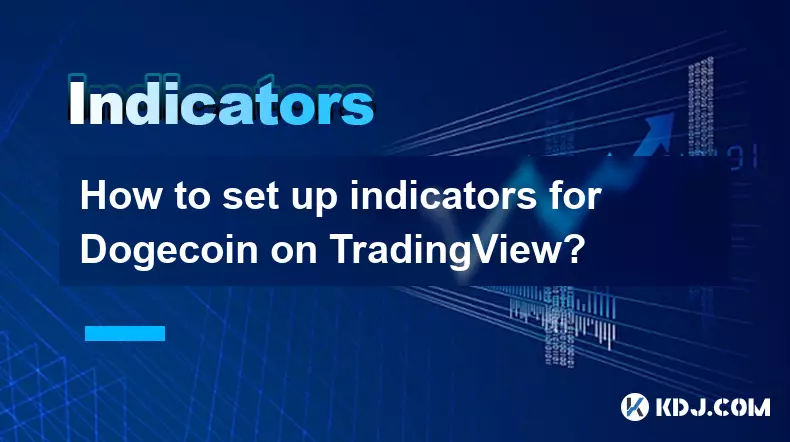
How to set up indicators for Dogecoin on TradingView?
Aug 25,2025 at 04:23pm
Understanding Dogecoin and TradingView1. Dogecoin, initially created as a meme-based cryptocurrency, has evolved into a widely traded digital asset. I...

What does it mean when the +DI and -DI cross frequently in the DMI indicator but the ADX is flattening?
Aug 11,2025 at 03:15am
Understanding the DMI Indicator ComponentsThe Directional Movement Index (DMI) is a technical analysis tool composed of three lines: the +DI (Positive...

What does the sudden appearance of a "dark cloud cover" candlestick pattern during an uptrend indicate?
Aug 13,2025 at 11:35am
Understanding the 'Dark Cloud Cover' Candlestick PatternThe dark cloud cover is a bearish reversal pattern in technical analysis that typically appear...

What does it mean when the moving average, MACD, and RSI all send buy signals simultaneously?
Aug 11,2025 at 01:42pm
Understanding the Convergence of Technical IndicatorsWhen the moving average, MACD, and RSI all generate buy signals at the same time, traders interpr...

What does it mean when both the KDJ indicator and the RSI show overbought signals simultaneously?
Aug 13,2025 at 11:35am
Understanding the KDJ Indicator in Cryptocurrency TradingThe KDJ indicator is a momentum oscillator derived from the Stochastic Oscillator, widely use...

What does it mean when the price is trading above the SAR indicator but the red dots are densely packed?
Aug 09,2025 at 11:49pm
Understanding the SAR Indicator and Its Visual SignalsThe SAR (Parabolic Stop and Reverse) indicator is a technical analysis tool used primarily to de...

How to set up indicators for Dogecoin on TradingView?
Aug 25,2025 at 04:23pm
Understanding Dogecoin and TradingView1. Dogecoin, initially created as a meme-based cryptocurrency, has evolved into a widely traded digital asset. I...

What does it mean when the +DI and -DI cross frequently in the DMI indicator but the ADX is flattening?
Aug 11,2025 at 03:15am
Understanding the DMI Indicator ComponentsThe Directional Movement Index (DMI) is a technical analysis tool composed of three lines: the +DI (Positive...

What does the sudden appearance of a "dark cloud cover" candlestick pattern during an uptrend indicate?
Aug 13,2025 at 11:35am
Understanding the 'Dark Cloud Cover' Candlestick PatternThe dark cloud cover is a bearish reversal pattern in technical analysis that typically appear...

What does it mean when the moving average, MACD, and RSI all send buy signals simultaneously?
Aug 11,2025 at 01:42pm
Understanding the Convergence of Technical IndicatorsWhen the moving average, MACD, and RSI all generate buy signals at the same time, traders interpr...

What does it mean when both the KDJ indicator and the RSI show overbought signals simultaneously?
Aug 13,2025 at 11:35am
Understanding the KDJ Indicator in Cryptocurrency TradingThe KDJ indicator is a momentum oscillator derived from the Stochastic Oscillator, widely use...

What does it mean when the price is trading above the SAR indicator but the red dots are densely packed?
Aug 09,2025 at 11:49pm
Understanding the SAR Indicator and Its Visual SignalsThe SAR (Parabolic Stop and Reverse) indicator is a technical analysis tool used primarily to de...
See all articles























